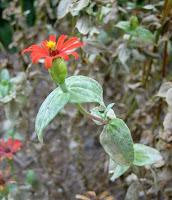 This blog (and most others) document gardeners' successes and perfection with pride. It's time to come down to earth. This week you will find the summer failures. It takes strong fortitude and courage to share failures with the world. Learn, offer your own advice and experience, and take a walk with reality.
This blog (and most others) document gardeners' successes and perfection with pride. It's time to come down to earth. This week you will find the summer failures. It takes strong fortitude and courage to share failures with the world. Learn, offer your own advice and experience, and take a walk with reality.Tomatoes
Tomatoes are always started from seed each year. Over the last few years, the variety Early Girl was planted, hoping to gain as many tomatoes as possible before the four plants start their annual summer tailspin. This year, Better Boy was tried. The fruit ended up being larger than Early Girls, but thankfully produced just as early. As in every year, they begin with promise and healthy growth.
 Then in the height of the summer heat as the fruit begins to ripen, the leaves begin curling, especially the new leaves. Leaf color goes from green to looking like they were speckled with white powder. Then the leaves dry up and die. The plants are now 6-feet (1.8 m) tall, growing above the stakes, and looking very pitiful. After the cooler weather starts in late summer and fall, new healthy leaves form at the tips of the stalks, blossoms emerge again, and we are back in business producing a small crop before frost.
Then in the height of the summer heat as the fruit begins to ripen, the leaves begin curling, especially the new leaves. Leaf color goes from green to looking like they were speckled with white powder. Then the leaves dry up and die. The plants are now 6-feet (1.8 m) tall, growing above the stakes, and looking very pitiful. After the cooler weather starts in late summer and fall, new healthy leaves form at the tips of the stalks, blossoms emerge again, and we are back in business producing a small crop before frost.The suspicion is that first, there is not enough sunlight, causing the excessive height and long stems. Second, I think the hot dry weather brings tiny tiny mites - this same type of tiny speckled light-ish green leaves appear on the sunflowers, marigolds, zinnias, and asters. Third, because of limited space, the tomatoes are planted in the same area every year, promoting overwintering of disease. But, some nice tomatoes are harvested each year before the plants go bust. This bounty pictured is from mid-July. (Notice the three tomato-scented candles on the window sill.)
 Sunflowers
SunflowersNext, the sunflowers: holy-leaf! These holes get larger and larger as the season goes on, and whatever chomps on them only comes out at night - late night. The critters that do this damage have never been caught or seen, although not for a lack of trying. It happens worst nearest the ivy ground cover, so slugs are suspected. But, slugs are cleared out early in the season, and no slime trails are ever seen. I suspect the beasties hide in the ivy during the day - the same damage does not appear on the backyard sunflowers. Crickets? Beetles? Earwigs?
 Zinnias
ZinniasThese zinnias are red spider zinnias - much smaller than I expected, and much more susceptible to powdery mildew. Based on experience this year, these are not recommended since they were short, had smaller blossoms (some no bigger than a dime), made poor cut flowers with their short stems, and were powdery mildew magnets.
 Oregano
OreganoThe small-leaf sweet oregano is ancient - probably 20 years old. This spring, its growth was stunted for some reason, and the usual 6-inch tall (15 cm) stalks with the leaves never appeared. The plant with its spicy leaves only grows in the cooler weather of spring and fall, so fingers are crossed that it will start to take off again soon. The flowers are produced in late summer and are always cut back to encourage fall growth. Maybe cutting the plant back to the ground will encourage new leaves this fall, or kill it for good.
 Fungus
FungusAlien invaders sprout up from time to time almost overnight. One year, a 'cat puke fungus' appeared in the front yard mulch. I thought it was exactly that, and after closer examination (umm, yes I did get closer) the blob was discovered to be a fungus, so I named it after its resemblance. An internet search seems to match descriptions and photos for a 'jelly fungus'. That irregular shaped fungus appeared as a coating on the mulch - orange and white and shiny - looking like the wet guts of a pumpkin thrown on the ground. However, cat puke elicits a more accurate response to its appearance. (It added some summer color to the shady spot under the mountain laurel.) This year, the 4-inch high (10 cm) E.T. fungus has landed. There are actually two growing, and nothing resembling this asymmetrical creature can be found in the online fungal photo directories.
Garden Calendar: • Blooming: silver salvia, nicotiana, cosmos, sunflowers, canna, zinnias, castor, basil • Harvested: 15 tomatoes • Bell peppers begin turning red |





0 comments:
Post a Comment